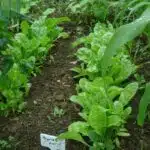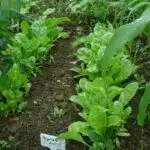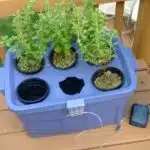Growing and caring for broccoli plants is a rewarding experience that can be enjoyed by both amateur and expert gardeners alike. With its unique flavor, texture, and nutrition, broccoli offers something special to any garden. As a hardy vegetable that can thrive in many climates, it is also an excellent choice for those looking to add variety to their vegetable gardens.
In this article we will explore the basics of growing and caring for broccoli plants in the home vegetable garden. We will discuss the best climate conditions; soil type; planting tips; and pest control methods. To ensure successful growth of your broccoli plant and a bountiful harvest at harvest time, we will also provide step-by-step instructions on how to properly care for your broccoli crop.
For those looking to experience the joys of growing their own broccoli in their very own backyard, this article will provide all the information necessary for a successful crop year after year! Whether you are a novice gardener or an experienced green thumb, this guide is sure to help you get the most out of your gardening experience with this amazing vegetable!
Selecting And Preparing A Site For Growing Broccoli
Identifying an ideal spot in the garden to cultivate broccoli can be a rewarding experience for any gardener. To ensure success, the location should offer several key features. From adequate sunlight to well-draining soil, a few simple considerations will help make growing this beloved vegetable easy and satisfying.
When selecting a spot for planting broccoli, the first step is assessing the amount of direct sunlight available. Most varieties require full sun – at least 6 hours of direct sunlight each day – in order to thrive, though some may tolerate partial shade. It’s also important to consider how much space is available for the plants and whether there are any nearby trees or structures that could cast shadows onto them during certain times of day.
Finally, it’s essential to consider soil conditions when choosing a site for broccoli cultivation. The soil should be rich in organic matter and free from any standing water or drainage issues; additionally, pH levels should range between 6 and 7 (slightly acidic). Adding compost or aged manure can help improve texture, while adding lime can raise acidity levels if needed. With these considerations in mind, gardeners are sure to find the perfect spot for their broccoli plot!
When And How To Plant Broccoli
Once the site for growing broccoli has been selected and prepared, it is important to become familiar with the timing and process for planting. Planting times for broccoli will vary depending on location and climate zone. Generally, broccoli should be planted in early spring or late summer/early fall when temperatures are mild. It is important to start seedlings indoors 6–8 weeks before the last frost date, or purchase young plants from a local nursery or garden center.
When ready to plant, choose a sunny spot with well-draining soil that has plenty of compost worked into it. Careful spacing should be observed when planting; typically 12–18 inches apart in rows that are 2–4 feet apart. When transplanting seedlings, dig a hole twice as wide as the root ball and just deep enough so its base is level with the surface of the soil. Firmly press down the surrounding soil so that it supports the seedling once planted.
Water plants deeply after planting and continue to water regularly throughout their growth cycle, being sure to keep soil moist but not soggy. Mulching can also help retain moisture levels between waterings as well as reduce weeds around your broccoli plants. With proper care and attention, you’ll soon be enjoying your own home-grown broccoli!
Organic Fertilizers And Amendments For Broccoli
Organic fertilizers and amendments are essential for growing healthy broccoli plants. It’s like a piece of the puzzle that completes the whole picture. Fertilizers and amendments provide essential nutrients to help maximize growth, yield, and overall plant health. As a specialist in botany and gardening, I can tell you that properly fertilizing your broccoli is key to successful planting.
When it comes to applying organic fertilizers, it’s important to understand the type of soil you have in your garden before making any decisions. If you’re working with clay soil or sandy soil, different amendments may be necessary to improve fertility and texture. Generally speaking, one application of fertilizer per season should suffice for broccoli plants. However, if you’re noticing signs of nutrient deficiencies or poor growth, an additional application may be necessary.
Choosing the right organic fertilizer or amendment for your broccoli will depend on your soil type and desired outcome. Compost is often a great option as it provides essential nutrients but also improves drainage and aeration in soils that tend to be heavy or dense. Additionally, rock dusts can be added as a natural source of minerals such as calcium carbonate or potassium sulfate which are beneficial for leafy green vegetables like broccoli plants.
Overall, choosing the right type of organic fertilizer or amendment will help ensure your broccoli plants thrive throughout their growing season. With the right combination of inputs applied at the right time in the right amount, you’ll have no problem boosting nutrient availability while keeping weeds at bay – all while providing sustainable nutrition for your vegetable garden!
Watering Broccoli Plants
Broccoli is a popular vegetable, both for its flavor and its health benefits. It can be daunting to grow broccoli in the garden, but with a few simple steps, you can have a successful crop. Watering broccoli plants is an important part of their care. Here’s what you need to know about watering your broccoli plants for best results.
When it comes to watering your broccoli plants, the key is consistency. You should water them regularly throughout the growing season, but not too often that the soil becomes soggy. One inch of water per week is recommended during dry spells, applied at the base of each plant and allowing it to soak in slowly. Avoid wetting the leaves as this could cause disease.
Additionally, make sure to keep an eye on the soil moisture level by checking it with your fingers or using a soil moisture meter. When the top two inches of soil are dry to the touch, it’s usually time to water again. With proper watering practices in place, you’ll ensure healthy growth and high yields from your broccoli plants!
By providing consistent moisture to your broccoli plants during their active growth period, you will help them thrive and reach their full potential!
Mulching For Weed Control And Heat Retention
Mulching is an important part of broccoli care to help keep the plants healthy and productive. It’s a great way to control weeds and retain heat in the soil, both of which are essential for optimal broccoli growth.
When selecting a mulch, it’s best to choose something natural that won’t affect the flavor or texture of the broccoli. Organic materials like straw, wood chips, and pine needles are all good options. Spread a layer two to four inches thick around each plant and keep it away from the stem. This will not only prevent weeds from growing but also help maintain even moisture levels in the soil.
In addition to helping regulate soil temperature, mulching also improves soil fertility by slowly releasing nutrients into the ground as it decomposes over time. Be sure to replenish your mulch every couple of years so that your broccoli continues to receive these benefits. With these simple steps, you can ensure your plants get everything they need for healthy growth and delicious harvests! Transitioning into controlling pests and diseases on broccoli is just as important as providing ideal growing conditions for this vegetable crop.
Controlling Pests And Diseases On Broccoli
In the garden, controlling pests and diseases on broccoli is an imperative step for successful harvest. Pest control and disease prevention is a key factor in ensuring healthy plants that are well-equipped to resist damage. To help ensure that your broccoli crop is healthy, there are a few simple steps to take. Like a guardian angel watching over its charge, taking preventative measures can save you time and money in the long run – and make the difference between a bumper crop of tasty broccoli or none at all!
First, it’s important to scout your garden regularly to check for signs of pests or disease. Look for yellowing leaves, insect damage, and other signs of distress such as wilting or gaps in the foliage canopy. If you find an infestation or diseased plant that could spread throughout your garden, take action immediately to remove it from the area. Also keep an eye out for weeds which can be pesky competition for nutrients and moisture.
Next, practice good organic gardening practices such as crop rotation – planting broccoli in different locations each season – to naturally keep pests at bay and allow nutrient-rich soil cycles to occur. Additionally, use beneficial insects such as ladybugs to attack aphids and other insects like mites which can cause harm to your plants. Finally, fertilize with compost tea or fish emulsion fertilizer before planting; this will provide essential nutrients needed by plants throughout their growth cycle while also helping boost natural immunity against disease organisms.
Taking proactive steps towards pest control and disease prevention is vital for a robust broccoli harvest; with thoughtful planning, you’ll be able to enjoy your bounty without worry!
Crop Rotation For Balanced Plant Nutrition
Crop rotation is an essential part of balanced plant nutrition for broccoli, or any vegetable. When properly implemented, it helps to reduce pest and disease issues and increases the health of the soil. It’s also important to understand how this practice works in order to get the most out of it.
Crop rotation involves growing a different type of plant in the same area season-to-season. This prevents certain pests from finding new hosts and reduces the buildup of diseases in the soil that can affect your crops. It’s also beneficial for providing the plants with a variety of nutrient sources which helps them grow big and healthy.
When planning your crop rotation for broccoli, think about what was grown in that area previously. Avoid planting any member of the brassica family, such as cauliflower or cabbage, for at least two years after harvesting broccoli. Instead, choose other vegetables such as beans or squash that will provide different nutrients to the soil and help keep pests away from your broccoli patch. With these tips in mind, you can ensure that your plants will be well-nourished and safe from potential pest problems!
Companion Planting To Deter Pests
Companion planting is a beneficial botanical technique for deterring pests and optimizing the growth of broccoli. It requires some forethought and planning, but the rewards are worth it in the end. Like a choreographed team effort, companion planting can be likened to a symphony of sorts – one with harmony and balance between plants. To reap these rewards, here’s an 8-step plan for optimal companion planting:
- Select sturdy companion plants that require similar soil types and growing conditions as broccoli;
- Choose plants that attract helpful insects, like bees and ladybugs;
- Consider adding flowers or herbs for additional pest control;
- Plant aromatic herbs to help mask the scent of broccoli from pests;
- Utilize taller crops to provide shade for surrounding plants;
- Plant garlic or chives around the perimeter to act as natural insect repellents;
- Group together vegetables that need extra protection from heat-sensitive crops like radishes or lettuce;
- Incorporate trellis structures with vines and climbing plants to provide further cover from wind, sun, and pests.
By carefully selecting companion plants that work well together in the garden, you can create an efficient system of pest control while achieving healthier vegetable harvests throughout the season. With this knowledge in hand, you’ll be well on your way to successfully growing broccoli in your own backyard garden!
Harvesting Broccoli
Are you wondering when and how to harvest broccoli so that it is at its best? Knowing when to harvest your broccoli can make for a successful and delicious home-grown crop! Read on to learn the botanical and gardening tips for harvesting this popular vegetable.
Harvesting broccoli at the right time is key to getting the best flavor and texture from the heads. Broccoli plants are ready to be harvested when their heads are still tight and green. It is important to pick them before they start flowering, as this signals that the vegetables have passed their prime. The best test of readiness is to squeeze the head; if it’s firm, it’s ready. It is also important to harvest before any yellow flowers appear, as this will signal that the head has become too mature.
When harvesting, always use scissors or a sharp knife instead of pulling off the heads with your hands. This will help preserve the plant’s shape while minimizing damage, allowing you more harvests in one season. For larger heads, cut them off just above where they attach to their stems; for smaller ones, cut off their entire stem so that new heads can grow in its place. Once harvested, wash and dry your broccoli thoroughly before storing or eating.
Storing your freshly harvested broccoli properly will help keep it fresh longer. To do this, wrap each head in damp paper towels and store them in an airtight container or plastic bag in your refrigerator’s produce drawer or crisper bin for up to five days.
Storing Broccoli
Now that you’ve gotten to the final step, storing your broccoli is just as important as all the other steps of growing and caring for them. As a specialist in botany and gardening, I’m here to provide you with some easy, doable tips:
- Start by separating any damaged florets from the healthy ones.
- Store them in a plastic bag or container that has small holes for air circulation.
- Place it in the refrigerator at 33-40°F (0-4°C).
These simple steps will help keep your broccoli fresh and crisp while you wait to enjoy its deliciousness. Just like collecting ingredients for a great meal, gathering all of these tips together should help to ensure your broccoli harvest is successful – so don’t forget about this last step! To get the most out of your vegetables, be sure to plan ahead and know exactly when it’s time to start using them up.
How To Use Broccoli
Broccoli is a powerhouse of nutrition, and its fresh green flavor can be enjoyed in many different ways. It’s like a superhero of the vegetable world, ready to save the day with its health benefits and culinary versatility.
As a specialist in botany and gardening, I’m excited to share some tips for using broccoli in your kitchen. Freshly harvested broccoli is ideal for steaming or lightly sautéing, as this helps preserve the delicate texture and natural sweetness of the florets. For a more intense flavor, try roasting or grilling your broccoli; both methods bring out nutty notes and an extra-crispy texture. Broccoli is also great for adding to salads, soups and pasta dishes – just make sure you cut it into smaller pieces so that it cooks through quickly.
When it comes to serving up delicious recipes with this superfood veggie, the possibilities are endless! But one thing’s for sure: by adding broccoli to your meals, you’ll be making every bite healthier while taking your taste buds on an exciting culinary journey. Let’s explore further by looking at some common broccoli varieties available today!
Common Broccoli Varieties
Growing broccoli in the vegetable garden is a rewarding experience, as there is a wide variety of cultivars that can be grown. These range from the popular ‘Calabrese’ to the well-known ‘Green Sprouting’. Knowing which one to choose for your particular garden needs is essential.
When selecting a variety of broccoli, it’s important to consider its suitability for the climate and soil conditions. Some varieties may require more space than others, while some might need more water or fertilizer. It’s also important to take into account each type’s harvesting time and growth habit, as this will determine when you can expect a harvest.
For those looking for an early crop, ‘Calabrese’ is a great option. This variety has fast-growing heads that are ready to harvest in just 70 days from sowing. If you’re looking for something with longer maturation times and higher yields, then ‘Green Sprouting’ could be the perfect choice. This cultivar takes around 90 days from sowing and produces heavy heads and side shoots over several months.
No matter which variety you choose, understanding how to properly care for your broccoli plants is essential for success in your vegetable garden. Properly caring for them includes things like providing adequate water and fertilization, controlling weeds, and monitoring pests or disease issues that may arise during their growth cycle.
Troubleshooting Common Growing Problems
Growing broccoli can be a tricky endeavor, just like any other gardening task. But with the right knowledge and effort, you can successfully cultivate these nutritious vegetables. It’s important to know how to tackle common problems that may arise when growing broccoli, so let’s take a look at troubleshooting for success!
Troubleshooting is an art form in its own right, like a dance between what works best for your plants and their environment. Knowing the steps can help you better understand the nuances of growing broccoli and keep it healthy and strong. From dealing with pests to climate concerns, there are several issues that might arise while trying to grow this vegetable. A master gardener must prepare themselves with the right knowledge and techniques to ward off potential pitfalls.
The first step is to ensure proper drainage around the base of your plant. Poor soil drainage could lead to root rot or other problems that could damage your crop. Additionally, pay attention to pests such as aphids or cabbage worms that may try to munch on your broccoli plants. Be sure to use safe pesticides or natural alternatives like beneficial insects if needed. Last but not least, watch out for environmental factors such as too much sun or lack of water which can cause serious damage as well. As long as you stay vigilant in keeping an eye on all aspects of your garden plot, you’ll be set up for success in growing broccoli!
With these tips in mind, you’ll be able move forward confidently into the next section about tips for growing broccoli successfully.
Tips For Growing Broccoli Successfully
Growing broccoli successfully is an art as much as it is a science. As a specialist in botany and gardening, I recommend the following tips to get the most out of your crop.
First, planting in the right spot is key. Choose an area that gets plenty of sunlight, has well-draining soil, and is sheltered from strong winds and excessive heat. Additionally, consider the size of your plants when choosing where to plant them. If you want larger heads, give them more room so they don’t crowd each other out.
Second, water regularly throughout the season to keep the soil moist but not soggy. Feed your broccoli every two weeks with balanced fertilizers or fish emulsion for best results. To protect against pests and diseases, use row covers to keep insects away and rotate crops annually.
Finally, time’s up! When harvesting time arrives, be sure to cut the heads off just above where the florets meet the stem – this will ensure that you get the biggest heads possible without sacrificing flavor or texture. With these tips in mind and some patience on your part, you’ll have an abundant harvest of delicious broccoli!
Frequently Asked Questions About Growing Broccoli
It is a known fact that growing broccoli can be a tricky business. That is why it is important to arm yourself with the knowledge needed to ensure success in your garden. To this end, this article seeks to explore the frequently asked questions about growing broccoli.
To begin with, we must understand how to properly care for these plants. The key lies in providing them with ample sunlight and well-draining soil. Additionally, fertilizing at least twice a year and providing adequate water will help ensure healthy plants. It is also important to remember that broccoli needs to be harvested before its florets open up; otherwise, it can quickly become bitter and inedible.
Finally, as with any gardening project, there are certain pests that can damage your crop. These include aphids, cabbage worms, and flea beetles among others. It is important to monitor your plants regularly and take action if you spot any of these pests on or near them. Utilizing natural pest deterrents such as neem oil or garlic spray can help keep away these pesky insects without resorting to chemical solutions.
As long as you follow the proper steps for caring for your broccoli plants, you will find success in your garden! With a bit of patience and attention, you should have some delicious homegrown broccoli in no time!
Frequently Asked Questions
What Is The Best Soil Type For Broccoli Growth?
An adage that applies to growing broccoli is ‘The right soil makes all the difference’. Broccoli grows best in a well-drained, fertile soil with a pH of 6.0 to 7.5 and plenty of organic matter. A loamy soil or potting mix that contains compost will provide the nutrients necessary for good growth. To prepare the area for planting, mix in about two inches of compost or aged manure into the top eight inches of soil and work it in thoroughly. It is also important to keep the soil moist as broccoli does not do well in drought conditions and is sensitive to fluctuations in moisture levels.
Soil should be tested before planting and amended accordingly if necessary. As broccoli has shallow roots, it’s best to avoid using too much fertilizer which can burn them. Adding organic matter like composted manure or compost will give the plants energy they need while promoting healthy root development at the same time. Also, adding mulch around plants will help retain moisture during dry periods and keep weeds down at the same time.
When growing broccoli, it’s important to pay attention to water needs as an overwatered plant can be susceptible to diseases such as clubroot and fusarium wilt while an underwatered one may become stunted in its growth or even die off completely due to lack of nutrients from poor drainage. Therefore, watering deeply but infrequently is key when caring for this vegetable crop-just enough so that there’s no standing water on top of the soil but not so much that it becomes oversaturated either! You should also aim for consistency with your watering schedule; aim for regular intervals between each session depending on weather conditions throughout your growing season-the hotter the climate, the more often you’ll want to water!
How Do You Know When Broccoli Is Ready To Be Harvested?
Ah, the age-old question: when is broccoli ready to be harvested? A Specialist in botany and gardening knows the answer. As any aspiring vegetable gardener knows, harvesting broccoli at the right time is key for getting the most out of your crop. It’s a delicate balance between leaving it too long or not long enough, so let’s get into it!
First off, you’ll want to keep an eye on the size of your broccoli heads. When they reach four to six inches across – ahem, I mean ‘when they look like small dinner plates’ – that’s a good indication that you’re ready for harvest. Don’t wait too long after this point though, or else you risk losing flavor and texture. You’ll want to pick those heads before they start flowering.
Finally, it’s also important to note that different types of broccoli will have different growth rates and maturity times. For example, some varieties are designed to be harvested earlier than others; while some produce smaller heads compared to others that can be left in the garden longer. Knowing which variety you planted is key for knowing when it’s time for harvest!
So there you have it: size and variety are two important indicators of when your broccoli is ready for picking! Give those plants a good look-over every couple days and you should have no problem getting your hands on some tasty veggies in no time!
How Can I Encourage More Broccoli Heads To Form?
The formation of heads is the end goal of growing broccoli in the vegetable garden. Encouraging more heads to form is a simple process that begins with planting the seeds or seedlings at the right time and location.
When it comes to timing, plant broccoli in early spring for a summer harvest or late summer for a fall harvest. The best site for planting is one that receives full sun and has well-drained soil enriched with aged compost. Broccoli needs well-aerated soil, so if necessary, consider aerating the soil before planting.
Once planted, keep the soil moist but not soggy by watering deeply once or twice per week. Installing row covers can extend your season and protect your plants from cold weather damage. When each plant reaches about 12 inches tall, apply a nitrogen fertilizer to promote head development. After applying fertilizer, water deeply to make sure it’s absorbed into the ground properly.
Keeping these tips in mind will maximize your chance of harvesting big juicy broccoli heads! With proper care and patience, you can enjoy an abundant harvest of this wonderful cruciferous vegetable!
How Often Should Broccoli Be Watered?
Watering your broccoli plants is essential for their growth and development. When it comes to growing healthy, productive broccoli plants, keeping the soil moist is one of the most important factors. As a specialist in botany and gardening, I can tell you that broccoli should be watered regularly but not too often.
To ensure that your broccoli gets enough water, try picturing a deep bowl filled with water that slowly overflows at its lip. This image conveys how deeply and slowly you should water your broccoli plants; you want to provide them with enough water to penetrate the soil down to its roots. Water your broccoli at least once every week or when the top 3 inches of soil feel dry. If there’s been an extended period without rainfall, then increase watering frequency as necessary.
In addition to regular watering, using mulch over the soil can help retain moisture and keep the weeds away from your broccoli plants. Mulching will also help protect against moisture loss during hot days, ensuring that your plants stay hydrated throughout their growth cycle. Furthermore, fertilizing your soil with nitrogen-rich compost will give it an extra boost of nutrients which will aid in encouraging more heads to form on your broccoli plants!
What Is The Best Way To Store Broccoli?
Storing broccoli is like a puzzle, but with many pieces that need to fit together seamlessly. If not done properly, the nutritional benefits of this nourishing superfood can quickly diminish. As a specialist in botany and gardening, I understand the importance of proper storage for broccoli and other vegetables.
For optimal freshness and taste, broccoli should be stored in the refrigerator as soon as possible after harvest or purchase. It’s best kept in a plastic bag or container with several small holes to allow air circulation. Broccoli will keep for 3 to 4 days if stored correctly. To extend its shelf life further, it can be blanched by boiling it briefly then cooling it before storing in an airtight package in the freezer for up to eight months.
When preparing broccoli for storage, make sure to wash it thoroughly under cold running water and trim off any brown spots or discolored leaves. To increase its shelf life even further, try adding a few drops of lemon juice to the bag or container before sealing shut; this will help keep broccoli fresher longer by preventing oxidation and wilting. With these simple steps, you’ll be able to enjoy this nutritious vegetable for weeks!
Conclusion
In conclusion, growing and caring for broccoli can be a rewarding experience. With the right soil type, proper watering, and harvesting at the right time, you can ensure your broccoli has optimal growth and productivity. To encourage more heads to form on each plant, make sure to pinch off any flowering buds that appear so the energy is focused on broccoli head formation. Finally, store broccoli in a cool place away from direct sunlight and it will stay fresh for weeks.
All in all, with a little TLC (tender love and care), you can have an abundance of delicious broccoli that not only tastes great but is also good for your health. Achieving success with this cruciferous vegetable may seem daunting but if you keep these tips in mind you’ll be able to reap the rewards – metaphorically speaking of course! Growing broccoli can be an enjoyable activity that anyone can do regardless of their gardening experience.





























